
Date of visit: August 8th, 2016
Weather: Cloudy
Hello, everyone! This is Narorin♪
In this Narorin Report or Naroripo, I will tell you about my visit to the Institute of Agrobiological Science, NARO (NIAS) in Tsukuba, Ibaraki Prefecture. NIAS was integrated into NARO on April 2016.
Today, I visited a laboratory conducting research on genetically modified silkworm. Silkworm is an insect species belonging to the same group with butterflies and moths. When moth caterpillars enter the pupal phase, they spin a silk thread and build small house, called cocoon, around their bodies to protect themselves. Silk is made from that cocoon.
NIAS has developed the technology that introduces various genes into silkworm genome, which enables the characterization of the gene function in vivo and addition of novel features to silk fibres. In this report, I will show you a little bit about silkworm research and recent progress! Let's go to the exhibition hall with me!
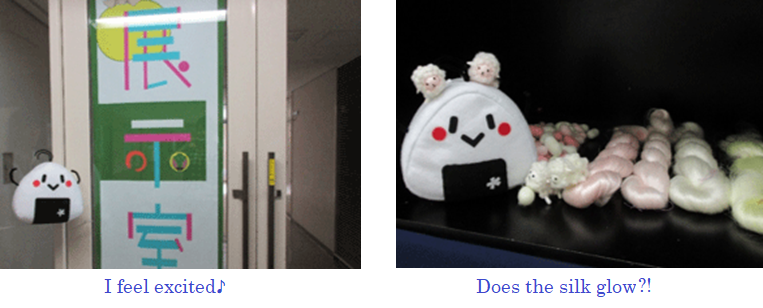
Well ~ ~! This is a fluorescent silk! The silk is made by expression of fluorescent protein genes of jellyfishes and corals into silkworm.
First let me switch off the room lights and then expose the silk thread to blue LED... When exposed to light, the cocoons and silk fibers showed glowing orange, green, pink colors and it is very beautiful. A wedding dress and gowns are also exhibited!
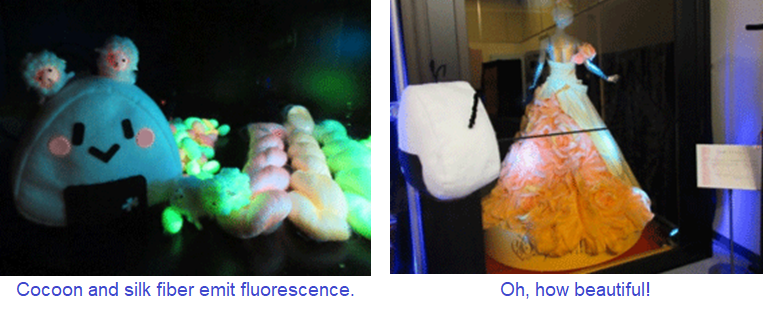
In this way, using genes of other organisms, it is now possible to create new silk material that have never been created before. Isn't it amazing!!!
Silk is a natural protein fiber. In Japan, silk has been used for surgical suture since a long time ago. Nowadays, through transgenic technique, silk attracts attention as material for medical application again.
Silkworms eat green leaves of mulberry, but they are still hungry.
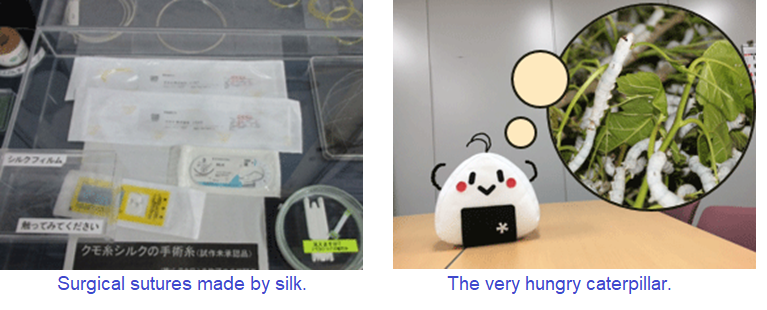
Silkworm, which is good at making protein, is called a "biological factory". Here researchers are aiming to utilize the silkworms for making raw materials for test drugs and medicines. Researcher's dream is delivering medicines for people who suffer from illness.
Next, I visited the laboratory where genetic recombination is carried out. There I saw silkworm eggs arranged in a glass plate. Eggs look like tiny grains of rice! There are 48 eggs in the plate. A gene is injected directly into the silkworm egg by using glass capillary!
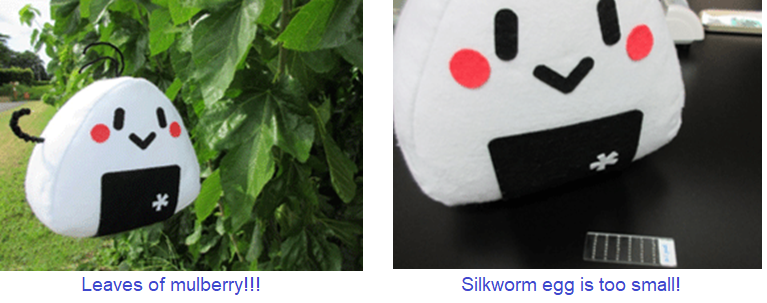
...And finally, I met the silkworm!! Hello there...I am Narorin♪ Aww...the caterpillar is crawling onto my head! And he is now relaxing on the top of my head. Let me visit the breeding room with him!!
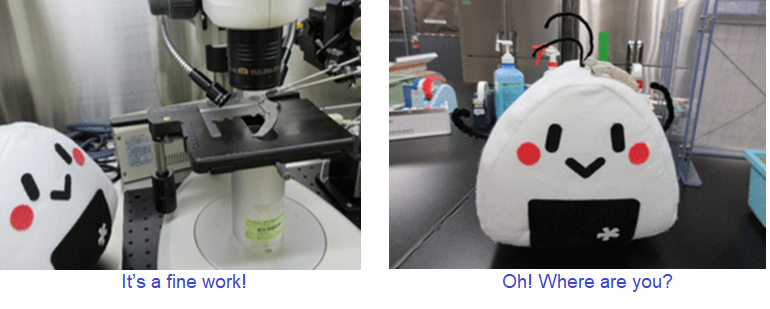
The gene is injected into the silkworm at the embryo stage. After that, researchers raise the injected embryos into an adult. Further, these adults mate each other to obtain eggs of next generation, and it is also checked whether introduced foreign gene is stably integrated into silkworm genome. It seems to be a tough and time-consuming work, but they do research every day in order to produce silkworms useful for people's living! It's a big deal for the future of the Japanese industry.
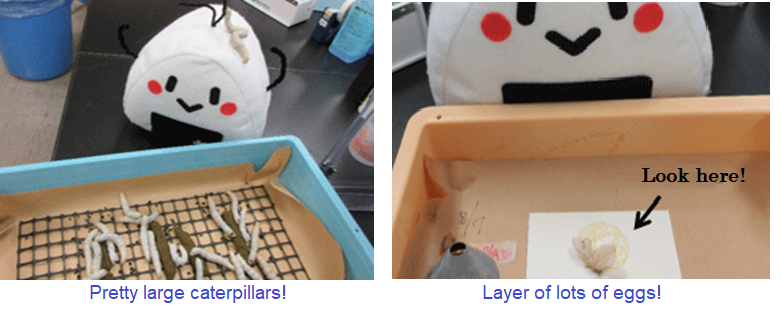
I had a photo along with the members of the Transgenic Silkworm Research Unit. Their smile also brings a lot of cheers to all♪
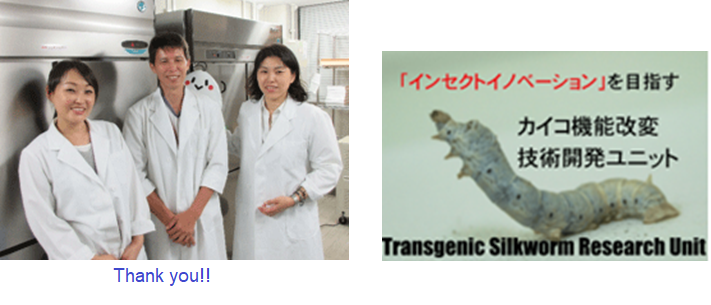
Now I'm wondering where to go next...
Check here for further details about the Institute of Agrobiological Sciences, NARO.